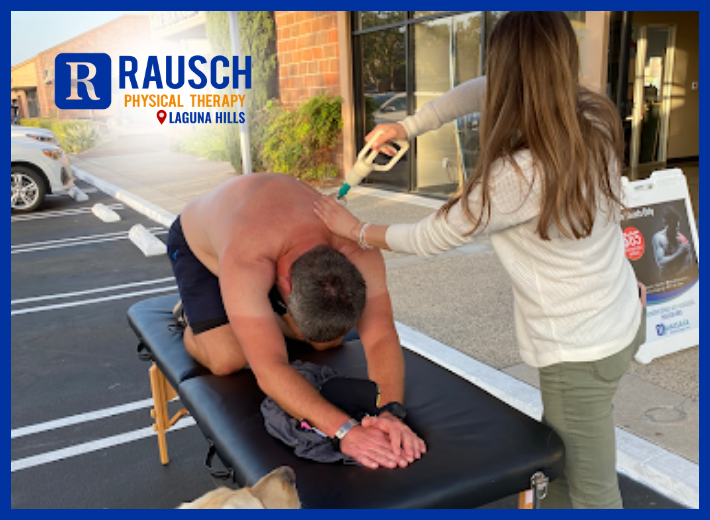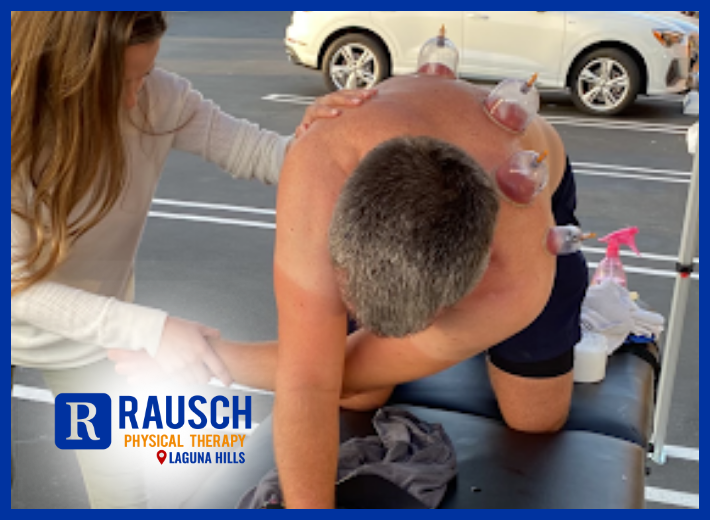Balancing a healthy diet and a consistent exercise routine can often feel like a complicated equation, but successful healthy living is truly about synergy, not sacrifice. The key to long-term,
What the Cup?
July 2, 2022 12:25 pm / Category: Rausch Physical Therapy

What is Myofascial Decompression (MFD) and why is it beneficial for you?
Dr. Camery Cano-RPT-Laguna Niguel
You may have seen cup therapy performed within PT clinics or on Olympic athletes and asked yourself, what is that torture device? That “torture device” known as cup therapy can quickly improve acute or chronic pain and mobility — but what is the actual mechanism, and is it appropriate for all patient demographics?
Around 1400 AD, ancient Egyptians created traditional cupping using heated glasses to remove blood from purge bites, skin lesions, and infections. For many years, cupping has been an alternative practice within eastern medicine to help heal the human body. Although removing blood from the tissues is not practiced within physical therapy, the same healing principles have been applied and modified to heal fascia tissues and improve movement.
We have a thin layer of connective tissue called fascia throughout our entire bodies and between our muscles. Fascia gives support and attachment to our tissues and muscles; when stress or injuries occur, it can create additional collagen scarring, making the fascia more dense and thick. This densification adheres to muscles and causes restrictions that impact how your body moves and how you activate your muscles. If muscles become too restricted, they cannot fire and contract properly, potentially inhibiting surrounding tissues and increasing compensatory movements and dysfunction.
MFD, or cup therapy, decompresses and lifts that dense fascial layer and offloads the muscles. Having the cups suctioned on your body creates a negative pressure force — providing more space within your musculoskeletal system and allowing increased mobility within your tissues. Research shows that cup therapy, in conjunction with active movements, can improve tissue mobility and quality of movement. Decreasing fascial restrictions can let each tissue layer glide with each other with less viscosity and increase efficiency in movement.
Once tissues have gained more mobility and range of motion, it is vital to provide stability exercises and re-educate the neurons within the new range of motion to maintain the effects of cup therapy.
How long are the cups on your body?
3-5 minutes while applying active-assisted or active movements
Who is not a candidate for cup therapy?
Cup therapy is not for patients with comorbidities of acute or severe cardiac diseases, uncontrolled hypertension, severe bruising, unhealed tissues or fractures, loss of sensation, cancer, high-risk pregnancy, and severe diabetes.
Precautions for postoperative use:
Post-surgical patients can have cup therapy performed on their operative body part; however, within modifications. Cup therapy can be applied post-op:
1-2 weeks around the surgical site but not directly over the incision.
3-4 weeks directly over the incision site and ports
5-6 weeks directly over open procedure sites
What should you expect after cup therapy?
Decreased severity of pain, increased muscle soreness and increased range of motion. Don’t forget to drink plenty of water for 24 hours following cup therapy!!
Dr. Camery Cano-RPT-Laguna Niguel







